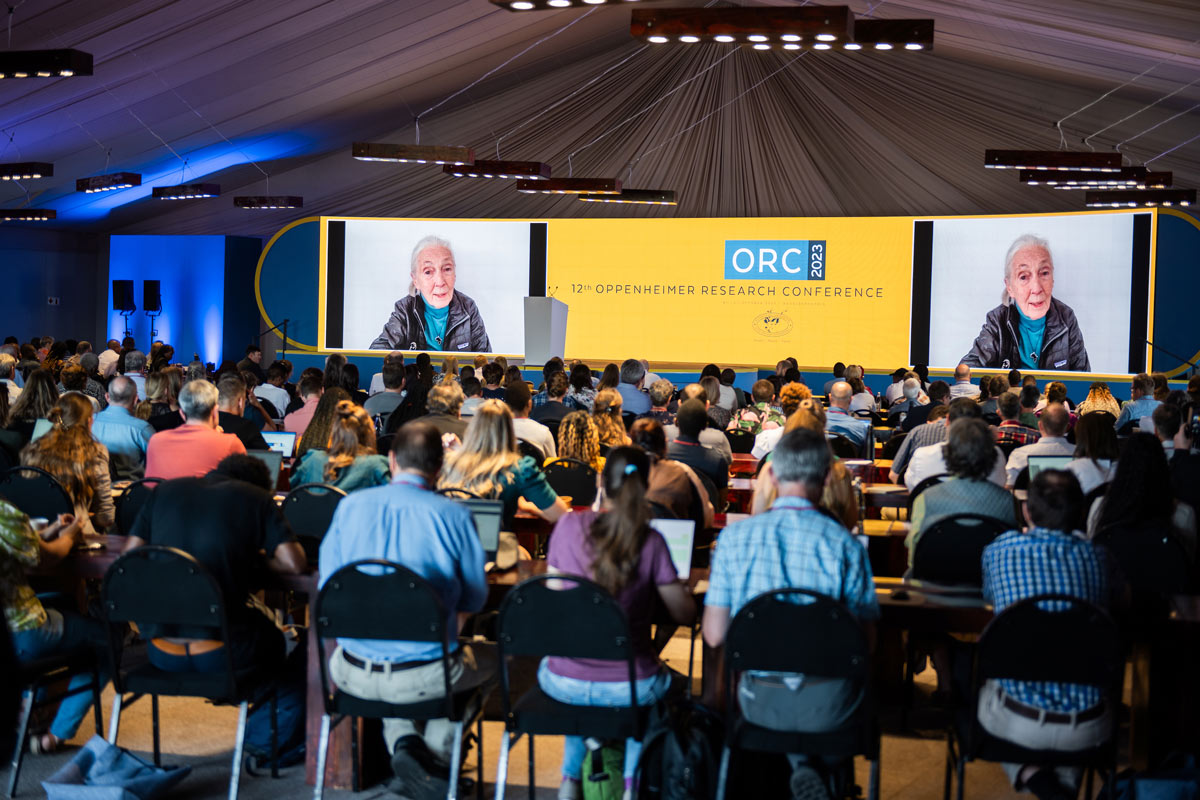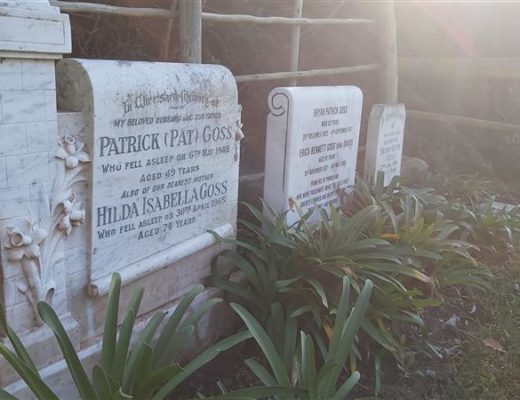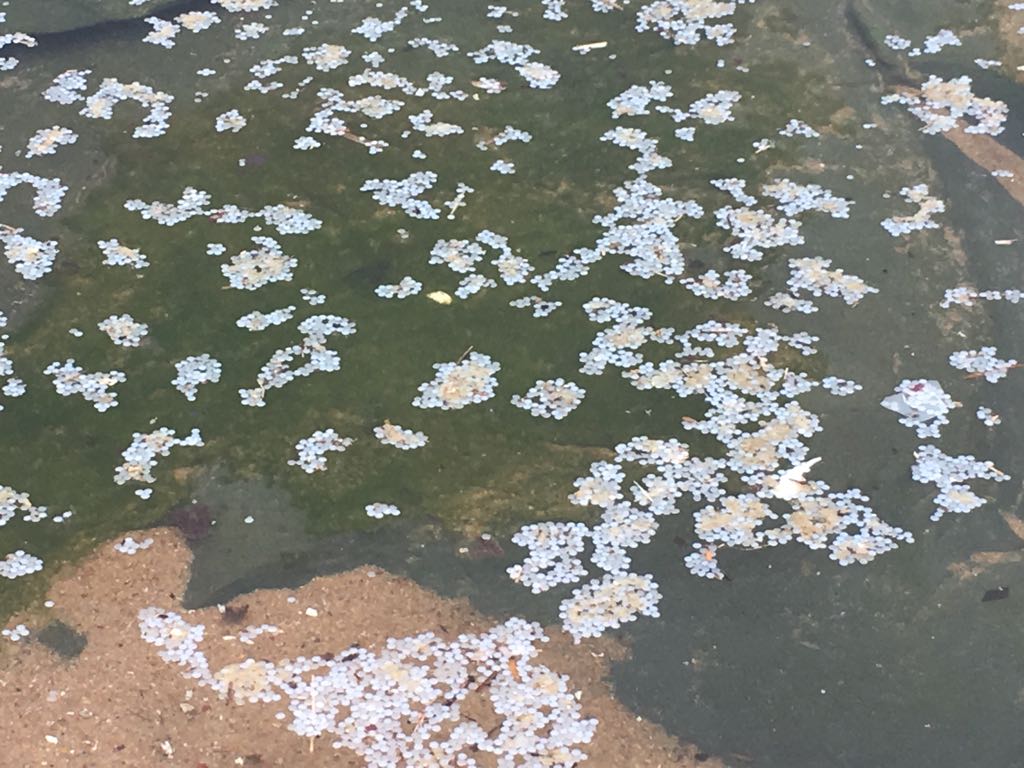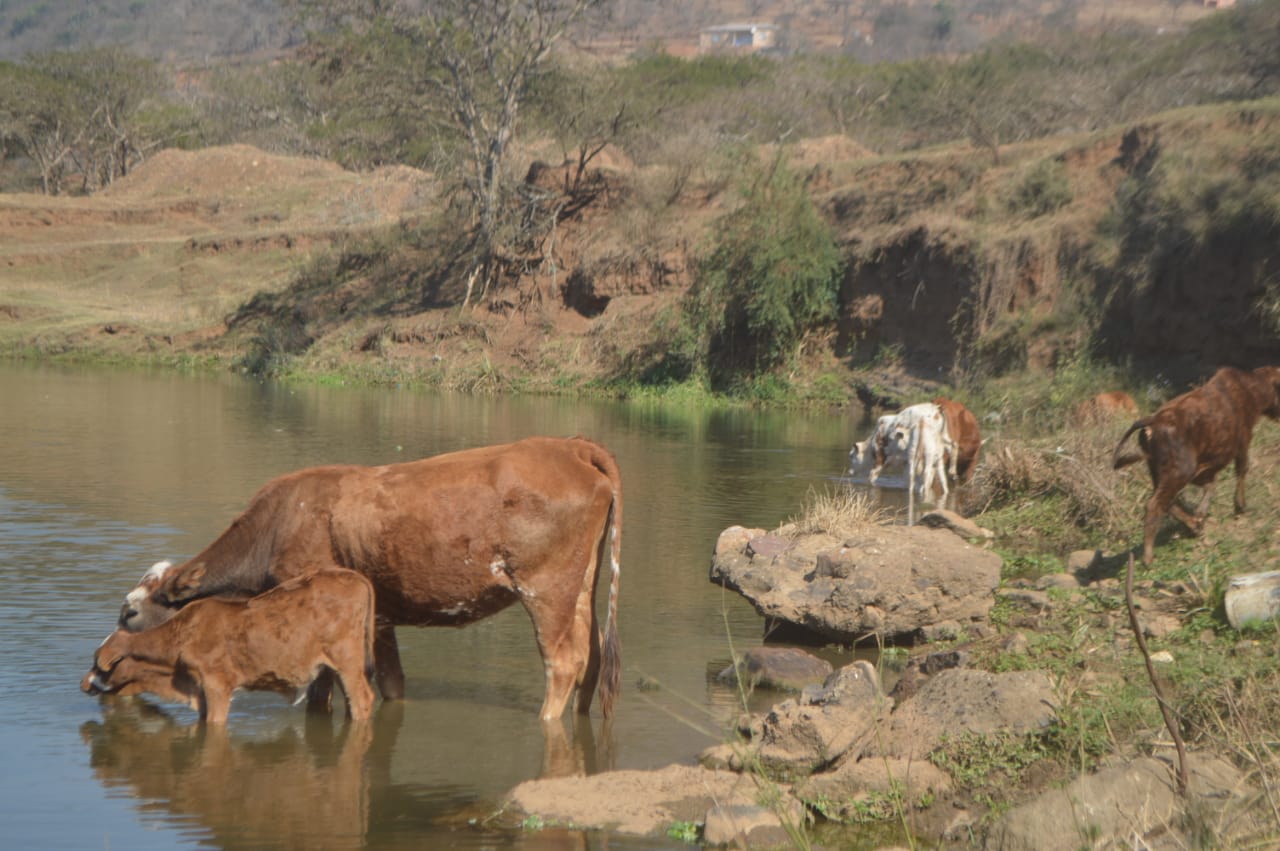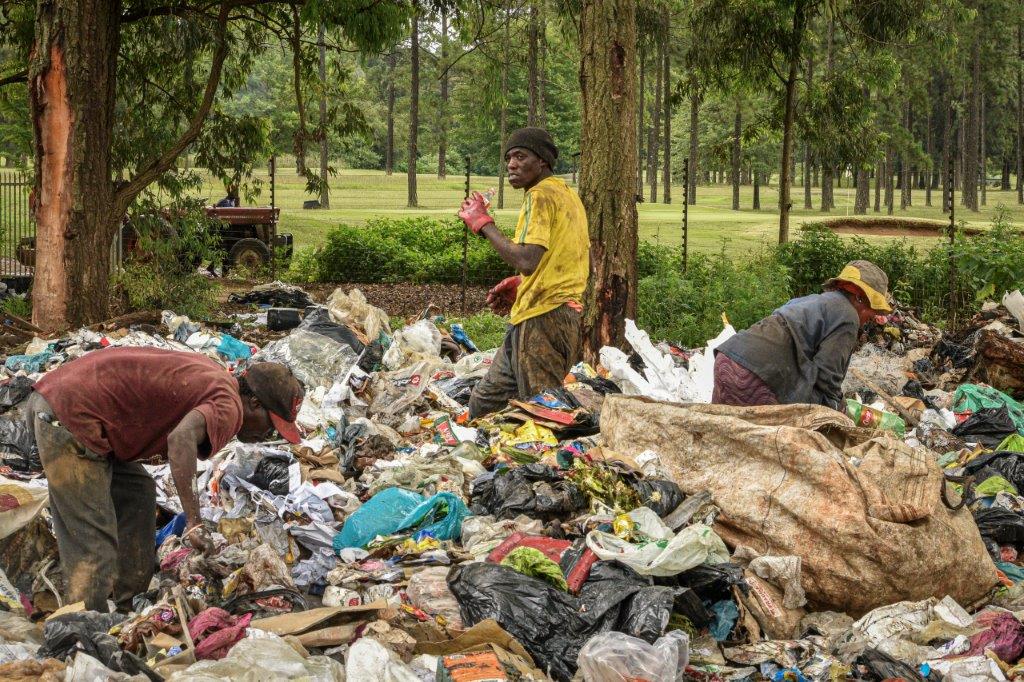Sick Durban river spoils popular recreational lagoon
Three years ago, national environmental authorities warned the eThekwini municipality to tackle the chronic pollution of the Mdloti River or face criminal prosecution. But it seems little has come of the threat, write Janis Theron and Matthew Hattingh.
First published by GroundUp
With the holiday season still in full swing, the Mdloti River mouth – bordered on the north by the resort villages of La Mercy and Umdloti – turned inky black and smelly.
It sparked outrage among residents who renewed demands that the eThekwini municipality act to end recurring pollution of Mdloti river.
“The stench of raw human waste became overwhelming”
However, an independent expert told Roving Reporters that given the size and complexity of the problem there was little chance of a quick fix. Poor sludge management at a nearby wastewater treatment plant was the biggest cause of pollution in the river.
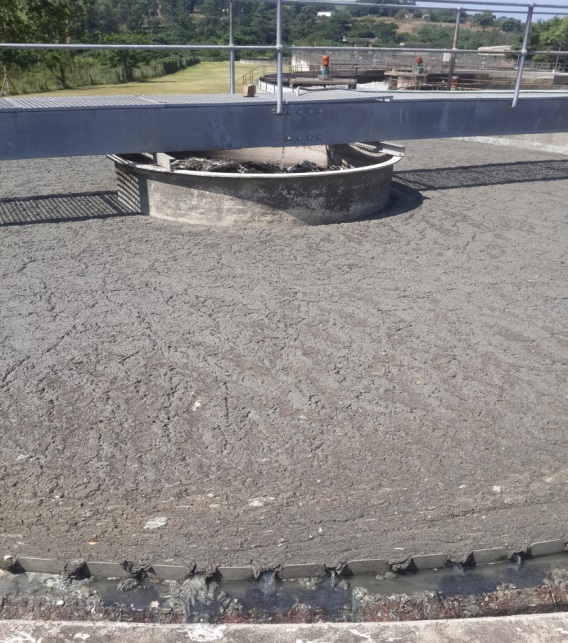
Poor sludge management at Verulam Waste Water Treatment Works has long been a problem. Photo compliments of the Department of Water and Sanitation, 2017
The Mdloti River has its source in hilly rural country some 25 kilometres north-west of the Indian Ocean, but as it descends to the coast, it passes through increasingly dense settlements, losing some of its sparkle.
After exiting the Hazelmere Dam the river skirts the factories and industrial parks of Canelands and Riverview Park.
Next it passes the Verulam wastewater treatment works. And it’s here that many residents, the expert and some municipal officials believe the bulk of the problem lies.
Jennifer Beresford, a resident of Mount Moreland, about a kilometre upstream from the mouth, was among those who has been pressing the municipality to take action.

Once a sparkly river, the Mdloti River once again turned putrid recently. Photo Courtesy Mount Moreland Conservancy

“The stench of raw human waste became overwhelming,” said Beresford. “For many years our community in Mount Moreland has been having a problem with sewage from the Verulam sewage plant flowing into the Mdloti River. It has been reported many times, but nothing has been done about it.”
The works are less than 10km from the mouth of the lagoon.
Beresford has shared with Roving Reporters emails she exchanged with municipal officials.
Struggling fish
In one, sent in mid-January, a senior eThekwini environmental health official, Vasie Pillay, acknowledged pollution levels were so high that fish in the river had been struggling due to a lack of oxygen it caused.
“Many can be seen just under the surface of the water. The extremely hot weather does not seem to be helping either and what is worse is that this stream eventually runs into the La Mercy Lagoon and onto the beach,” said Pillay.
Environmental health officials did a site inspection and Pillay said the river appeared clear upstream of the works, although some overflowing manholes were noted.
Below the works, where effluent is discharged after treatment, the river appeared highly contaminated.
Beresford said Pillay advised her that she had escalated the matter to the municipality’s water and sanitation department, which have been providing Beresford with updates.
Roving Reporters could not immediately reach Pillay for comment but has emailed her a copy of this report.
Pollution problem on-going for years
Beresford said she was continuing to press the municipality for the results of lab water quality tests and copies of any department reports on the problem.
“All historical evidence points to the Verulam water works being the main source of the problem. The river remains black, smelly and foamy,” she said.
Angie Wilkins, chairman of the Mount Moreland Conservancy, told Roving Reporters there had been a similar incident in 2016.
At the time, Wilkins said she had been told by a municipal official that dye from a factory upstream of the works was to blame.
However this could not be confirmed this week.
Wilkins, a resident of the area for 30 years said problems with the works dated back many years.
She also questioned the slow progress in replacing the Verulam works and other smaller works in the region with a single, large treatment plant.
Slow progress
Wilkins felt river pollution might be a factor in the virtual disappearance over the past three seasons of vast flocks of barn swallows that used to roost in wetlands at Mount Moreland, attracting hundreds of visitors.
But she felt climate change, habitat destruction and impacts of agriculture were more significant.
Mount Moreland is also near Durban’s King Shaka International Airport, which opened 10 years ago. Low flying air traffic might well have also disturbed the several hundred thousand swallows that used to roost in and around Mdloti’s reed beds
Responding to questions from Roving Reporters this week, eThekwini spokesman Msawakhe Mayisela said the city worked hard to protect its rivers and streams from being contaminated and was investigating.
City apologises
“The city is currently conducting an investigation so as to ascertain the source of this raw sewage that is reported to be spewing into Mdloti River. We would like to apologise to all our residents who are bearing the brunt and we hereby make an undertaking that the city will come up with a permanent solution to this challenge.”
As far back as 2013, environmental journalist Tony Carnie reported that pollution in Mdloti River had been traced to the works.
In 2017, Roving Reporters detailed how the river was choked with a frothy gunge near Mount Moreland.
This sparked an investigation by the Department of Water and Sanitation, which slapped the municipality and the Verulam works with Section 19 compliance orders.
Compliance orders
The orders, in terms of the National Water Act 36 of 1998, are the first step in a legal process that, on paper at least, could lead to prosecution if those responsible for managing the works fail to comply with laws governing waste treatment.
At the time, national Department of Water and Sanitation spokesman, Sputnik Ratau told Roving Reporters: “The message we want to send out is certainly: ‘Get your act together or face criminal prosecution’.”
Roving Reporters this week asked Ratau what would be his department’s next course of action.
Ratau said the root cause of the problem had not been addressed and the department now needed to “engage at the level, which is enforcement protocol”.
High level meetings
This would involve high-level meetings with accounting officers which would produce measurable outputs that the department would monitor, he said.
“This way, the department will be able to compel the municipality to commit to and comply with set and agreed outputs in order to address the issue of pollution.
“The department will be engaging the municipality to get earliest possible dates for engagement, in order to kick-start the process,” he said.
He rejected suggestions the department had been slow in taking action.
“Slow as in determined by what? We are taking the necessary action and following the requirements. The idea of compliance enforcement is to engage the transgressor with the intention to bring him to comply. Punitive measures are regarded where there is no requisite response,” said Ratau.
Expert sheds some light
Roving Reporters this week spoke to an independent expert with a keen insight into pollution on the river and problems facing the authorities.
The expert, who declined to be named, said eThekwini needed to expand preventative maintenance of its sewerage and roll out networks to informal settlements.
Exacerbating the problem were pressures from climate change and, more significantly, widespread illegal connections of stormwater drains into sewers. As many as one in five households in eThekwini had illegal connections and as a consequence parts of the City’s sewerage network could not cope when it rained heavily and overflowed into rivers before the waste could be treated.
Compounding this, many of eThekwini’s 27 wastewater treatment works faced serious problems with the disposal of sludge. This is the solid matter that remains after effluent was discharged into rivers.
The expert, who has many years’ experience in the industry, said sludge was supposed to be removed and disposed of at municipal landfill sites, or ideally used as fertiliser. But this often didn’t happen efficiently.
Power games
The expert speculates that overzealous municipal procurement methods were making it hard to hire honest sludge removal contractors and instead “putting more power into the hands of crooks”.
As a result, sludge and untreated waste were flowing into the Mdloti River and settling into an irrigation dam a few kilometres downstream of the works. The expert believed this was a major source of the putrid black water now choking the estuary.
“It’s not a capacity issue,” said the expert. The plant had been upgraded 10 years ago, so the current problems were not related to any long-term planning for a new regional plant.
Would criminal sanction of the sort the Department of Water and Sanitation was threatening work?
The expert felt the department was “trying its best under difficult circumstances”, but faced a shortage of resources. In any case, the burden of proof in a criminal case was high, making a successful prosecution difficult.
A civil challenge, where the community banded together to bring a class action and where a ruling was based on a balance of probabilities, had a better chance of succeeding, the expert said. – Additional reporting by Fred Kockott
BANNER IMAGE
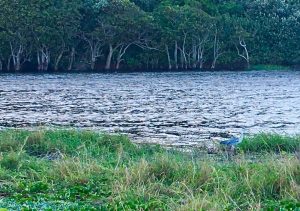
Persistent pollution of the Mdloti River is impacting on biodiversity in the region, including La Mercy Lagoon, a popular water sports playground in KZN.

Journalists are trained to answer six key questions: Who, What, Where, When Why, and How. >> Click here to read about the 5 W’s and H of Roving Reporters.
Difficult choices must be made about how we utilise natural resources. But these choices need to be well informed if we are to do the least harm. This requires citizens have a clear picture of what is happening on the ground. There are too many vested interests at play to leave things entirely to officials, elected or otherwise. Keeping people in office on their toes and holding powerful interests, including NGOs, to account is an important role of the press. Unfortunately, the media’s ability to do its job has been hollowed away by the decline of traditional advertising support and readerships in the face of online technology. Some papers have closed down, others are a pale shadow of their former selves; everywhere staff are stretched or juniorised. Press standards have declined and false news abounds. Reporting is increasingly superficial, both in print and online media publications. Yet a strong appetite remains for credible news and insights, especially on environmental matters. This underlines the need for Roving Reporters to grow its operations and develop a blueprint for environmental journalism training in Southern Africa. You can support our training progamme, Developing Enviromental Watchdogs by making a donation, no matter how small. Click here for further information.
If you have a story you would like Roving Reporters to cover, send a WhatsApp message to +27 83 277 8907, including contact details of people we should speak to in verifying the facts and conducting associated fieldwork and research. Your message should also answer the question: Why should we care?




